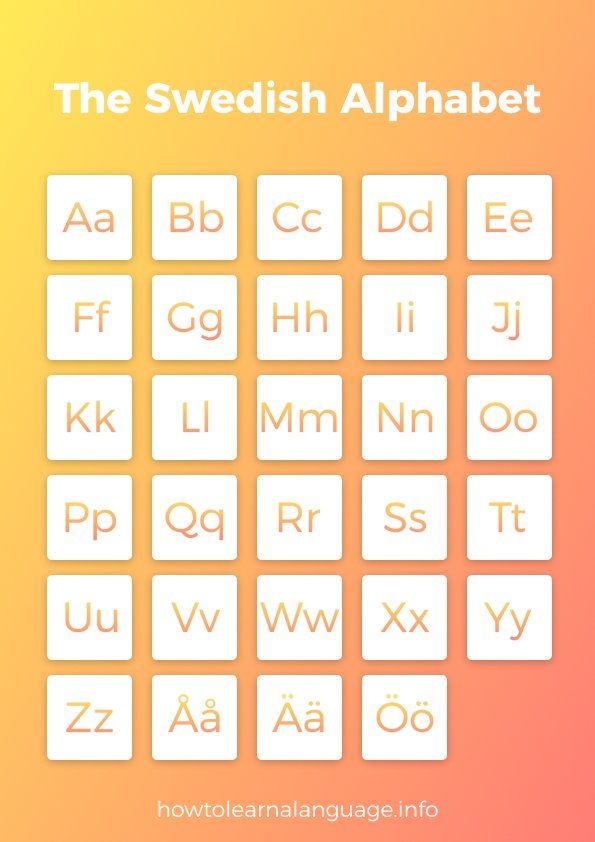Swedish Alphabet and pronunciation
Swedish belongs to the Germanic languages. The most important Germanic language is English, with about 500 million native speakers.
More precisely, Swedish is a North Germanic language like Norwegian or Danish.
There are 29 Swedish letters. They consist of the 26 common letters from the Latin alphabet and three special letters: Ää, Öö and Åå. It has nine vowels and 20 consonants.
Swedish Vowels
Pronunciation of Swedish Vowels
The vowels can be pronounced long or short. With the vowel i, the mouth tends to be more closed and the mouth goes wide in pronunciation. With the vowels e and ä, the mouth is slightly more open, but the mouth opens wider when the ä is followed by an r, for example: ä + r and with the vowel e, the mouth also tends to go wide. With the vowel y, the mouth is rounded, just like with Ö, except that with the vowel Ö, the mouth opens a little wider.
If you want to pronounce o, å and a, you have to keep in mind that the mouth of the vowel O is round and not very wide open. If you want to pronounce å, your mouth should open a little wider and be most open at the A vowel. It is important to push the tongue back for the three vowels.
Swedish consonants and their pronunciation
The 20 Swedish consonants are: b, c, d, f, g, j, k, l, m, n, o, p, q, r, s, t, u, v, w, x, and z.
Pronunciation of the consonant b
With the consonant b, the lips lie slightly on top of each other and then part again with a soft explosive sound. At the end of a word, the b should be clearly heard, as in the following words:
- tub
- jobb
- kub
- klubb
Pronunciation of the consonant p
The p in Swedish is pronounced similarly to the b, only the loosening of the lips is a bit more explosive and intense. If the p is at the beginning of a word, some air is exhaled with it, this is called "aspirating".
Pronunciation of the consonant d
The tip of the tongue presses against the upper dental crest and is released with little force to produce a slight explosive sound. The voicing of the d should be clearly audible at the end of a word.
Pronunciation of the consonant t
The t is pronounced like the d, except that the tongue is released more energetically from the dental dam. As with the p, the t is aspirated when it is at the beginning of a word.
Pronunciation of the consonant g
The g is pronounced hard before the vowels a, o, u and å. In this case, the back of the tongue is lifted against the palate and is released again with a soft burst. At the end of a word, the g is also pronounced hard. At the end of a word, the g should be easily heard, except for the following endings, where it is pronounced like the English "y"
- -rg
- -lg
- -ng
Before the vowels e, i, y, ä and ö, the g is pronounced like the English y in "you", as in the following words:
- gift
- göra
- igen


